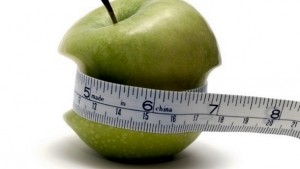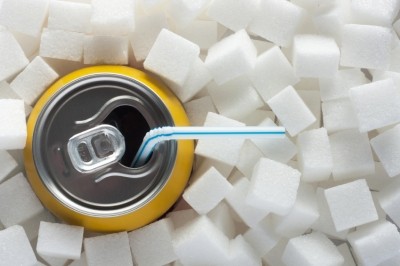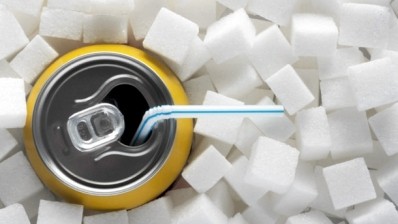This week Down Under
Junk tax and healthy subsidies would cost nothing and save billions

Moreover, the most productive health outcomes would cost household budgets virtually nothing extra per year, researchers found.
Their computer modelling showed that not only would Canberra save some A$3.4bn (US$2.6bn) in healthcare costs if such a policy were introduced, but also it would result in an additional 2.1 years of healthy life for every 100 Australians alive in 2010.
The study, published in PLOS Medicine, also found that a tax on sugar in foods like confectionery and ice cream alone would result in 1.2 additional years.
Lead researcher Linda Cobiac, of the Centre for Public Health Policy in Melbourne, said few other public health interventions could deliver such health gains across the whole population.
But as many countries propose or implement taxes to curb diet-related diseases, little is yet known about the cost-effectiveness of combining such taxes with government subsidies.
Co-author Tony Blakely said the research team also experimented with different combinations of taxes and subsidies to ensure minimum financial pain to households.
“Our modelling shows Australia can achieve maximum health impact for less than 1% extra impact on household budgets,” Dr Blakely said.
“Critics often say taxes on unhealthy food make life tougher for low socio-economic households, but we’ve demonstrated that the right structuring of incentives means the financial impact on households is negligible, while their health improves.”
Dr Blakely said while taxes on foods high in sugar, salt and saturated fat generated the largest health gains, the benefits from a tax on sugary drinks alone were still substantial.
The food industry’s representative body has slammed the report, calling it “lobbying dressed as analysis”.
Gary Dawson, chief executive of the Australian Food and Grocery Council, said the research claimed to be a “cost effectiveness” study but ignored many of the costs.
“We struggle to see the value of a study which is effectively advocating a doubling of the GST on food, but has openly acknowledged it has not accounted for the cost to business, and assumes away the costs to individual consumers and household budgets,” said Dawson.
The body believes that the analysis is also missing a 10% GST tax on discretionary foods, “which has been applied to food in Australia for 17 years and so the health benefits claimed in this study should already be proven”.
“But this and similar taxes overseas have not reduced obesity rates,” Dawson added.
The Australian food and beverage industry has traditionally been in strong support of the government’s policy to tackle poor diets through community outreach and emphasis on physical activity. The AFGC also endorses the government’s health star rating scheme, which shows how healthy a product is on its labelling.
More stories from Australia…
Australia’s pie market booming as Pie Face hunts for buyer
With reports that beleaguered Australian fast-food chain Pie Face may soon be sold, new market research bodes well for the company if it gets back on track.
In January, a receiver for the debt-ridden pie chain, which has stores in Victoria, New South Wales and Queensland, announced it was heading towards profitability and would soon be sold.
Interest in its acquisition will no doubt be bolstered by the news that the number of Australians who eat pies and pasties has grown from 8.1m to almost 9.4m people since 2013.
Pie lovers are more likely to live in rural areas than capital cities, while South Australia was named as the country’s pie heartland—though not in Adelaide, the home of the “pie floater”, according to a survey by Roy Morgan Research.
“Amid reports that Pie Face is on the verge of being sold, it’s interesting to see that South Australia is home to the country’s highest proportion of pie lovers, but perhaps the new owners should consider expanding beyond the east coast,” speculated Roy Morgan’s Norman Morris.
“Furthermore, Pie Face’s stores tend to be in capital cities, with more than half their stores located in Sydney, a city whose residents are less likely to enjoy eating pies/pasties than anywhere else in Australia.”
According to Roy Morgan’s data, a move into key rural areas might bear fruit for the chain, he added.
The data also confirms that sport and pies are a match made in heaven, and it is no coincidence that pie brand Four’n Twenty sponsors three AFL and two NRL teams, with fans of both codes having an above-average appreciation of pies and pasties.
Curiously, an even higher percentage of A-League soccer supporters (58.5%) are pie fans, though none of the league’s 10 teams have a pie-related sponsor.
“Of course, nobody would be surprised to learn that pie fans are predominantly male, or likely to be supporters of the three main football codes,” Morris added.
“After all, buying a pie while at a match is almost obligatory, a fact clearly not lost on AFL/NRL sponsor Four’n Twenty.”
Most Aussies are battlers when it comes to dieting
Australian researchers have confirmed that most Australians over-think their approach to dieting, and by doing so they manage to derail their best intentions.
According to behavioural scientists at Csiro, the government’s research institute, Australians have expectations that are too high and are anxious about failure.
After surveying the eating habits of more than tens of thousands of Australian adults, they were able to identify the five behavioural “diet types”, revealing why many people find it hard to maintain a healthy diet.
Of these types, the over-thinking, anxious perfectionist was found to be predominant, after the researchers assessed all personality traits and behavioural patterns in relation to eating and weight loss.
This so-called “Thinker” diet type was the leading type among 41% of adults, and who identified as Thinkers were found to be goal-orientated and analytical.
Yet these qualities were seen to be counterproductive to achieving diet goals as the Thinker tended to over-analyse every decision, set unrealistic expectations and give themselves little margin for error. This type is also more prone to self-doubt, anxiety and stress, which can lead to over-eating and low success.
With nine out of 10 of Australians attempting to lose weight at least once in their lifetime, it appears that Australians are motivated to lose weight. Though judging by the results of the Csiro study, not everyone is successful: about half had made more than six attempts, and almost 20% had tried more than 25 times.
Even with this strong motivation and persistence to lose weight, obesity rates remain high.
The most and least common of the five main diet personality types across the surveyed population were:
The Thinker (41%): “Overthinking and worrying about failure leads to stress which can derail diet progress.”
The Craver (25%): “Craves delicious food and finds it hard to stop, leading to overeating in tempting situations.”
The Foodie (15%): Loves making, eating and experiencing food
The Socialiser (15%): Flexibility is essential, won't let strict food restrictions stifle social life
The Freewheeler (4%): Makes spontaneous and impulsive food choices, finds planning meals hard
"If you have struggled to maintain your diet after a few weeks, your personal diet type will shed light on what behaviours and habits are creating a barrier for you," said Csiro behavioural scientist Sinead Golley.
"Knowing your personal diet type helps you maintain a healthy eating plan because you are more aware and equipped to manage moments of weakness.
"Successful weight loss requires a different mindset, focused on long-term total wellbeing. If you identify as a Thinker, you can improve your eating habits by reflecting more on positive changes and rewarding progressive achievements towards your goal."
The second most common type, “The Craver” scored high for people who were obese, while people who identified with “The Foodie” type were more likely to be a normal weight. This suggests that Cravers may need particular strategies to help them cope with strong desires for food.
When it came to differences between the generations, Cravers included a high proportion of young adults, while older people scored high for “The Socialiser” type.
The results come from an online diet type assessment launched by Csiro last month to help Australians understand their limitations to successfully maintain a diet.
More than 28,000 participants filled in a short survey to receive instant, personalised feedback about the participant's diet type profile and the right strategies to manage it.





















